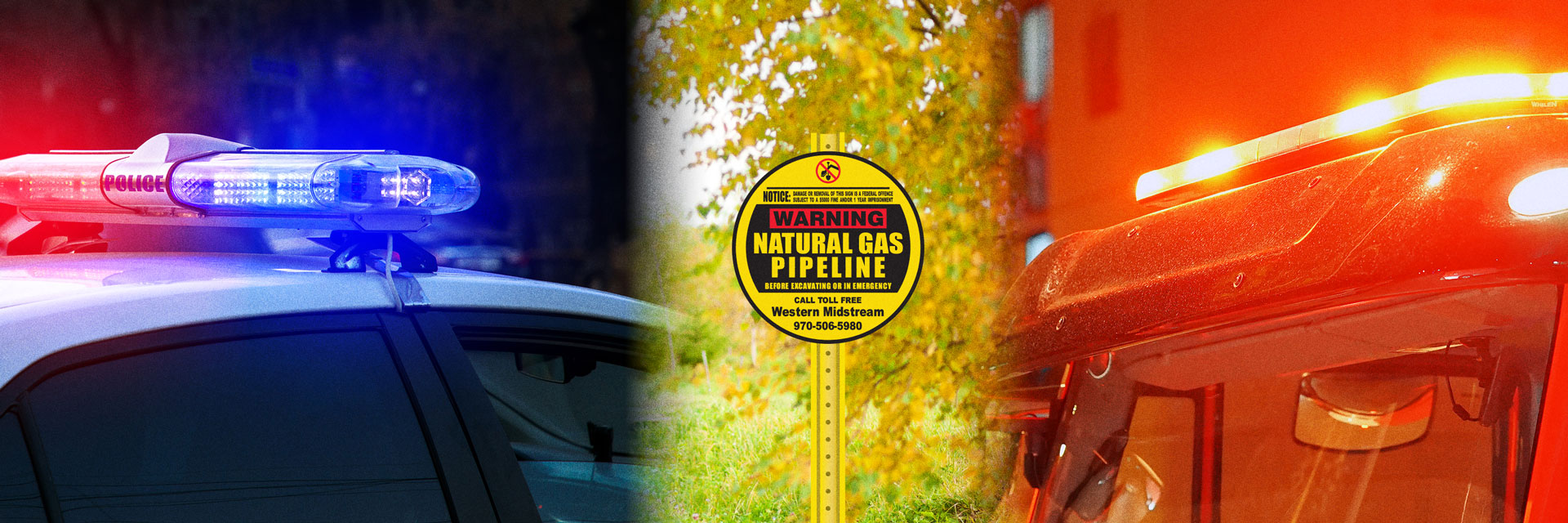Product Characteristics
The charts below provides general information about the products shipped in Western Midstream’s pipelines.
Natural Gas
Characteristics
Leak Type:
Gas
Vapors:
Lighter than air
Health Hazards:
Extremely high concentrations may cause irritation or asphyxiation -possible presence of H2S, a toxic gas.
Fire Hazards:
Extremely flammable and easily ignited by heat, sparks, or flames.
How To Recognize a Gas Pipeline Leak
Visual signs:
- Oil stains or puddles on the ground
- An oily sheen on water bodies like ponds or streams
- Discolored or dead vegetation around the leak area
- Abnormal ground conditions like frosted patches in warm weather
- Visible liquid pools near a pipeline
Smell:
- Strong petroleum odor
Sound:
- Hissing or blowing sound, depending on the leak size
Liquid Petroleum
Characteristics
Leak Type:
Liquid
Vapors:
Heavier than air
Health Hazards:
Respiratory tract irritant, may cause central nervous system effects such a drowsiness and or asphyxiation
Fire Hazards:
Extremely Flammable liquid or vapors are heavier than air an may accumulate in low areas and travel a considerable distance to an ignition source
How To Recognize a Liquids Pipeline Leak
Visual signs:
- Discolored or dead vegetation
- Flames coming from the ground
- A cloud of vapor, fog or mist
- A pool of liquid on the ground or bubbling in a wet, flooded area
- A rainbow or sheen on the water
Smell:
- Some gases are odorless, and odorant cannot always be added.
- An unusual odor or scent of gas or petroleum
Sound:
- An unusual hissing or roaring noise coming from a pipeline
Respond and Report a Pipeline Emergency
The following guidelines are designed to ensure your safety and the safety of those in the area if a natural gas or petroleum product pipeline leak is suspected or detected.
- Secure the area around the leak.
- Evacuate the public to a safe distance, if necessary.
- Contact the appropriate pipeline owner or operator as soon as possible.
- Establish a command center.
- Control ignition sources. If the pipeline leak is not burning, take steps to prevent causing any open
- flame or another potential source of ignition, such as an electrical switch, vehicle ignition, lighting of a match, etc.
- Do not use a cell phone or two-way radio near the suspected emergency area.
- Do not attempt to put out natural gas or liquid fires. If natural gas or petroleum product is burning, control the secondary fires.
- Do not operate any pipeline valves or equipment.
In the event of a pipeline leak, only properly trained persons equipped with self-contained breathing apparatuses and hydrogen sulfide monitors should enter areas where hydrogen sulfide levels exceed ten parts per million (ppm). If you have special equipment or procedures for handling these types of emergencies, we would like to know about them. and Report a Pipeline Emergency
Western Midstream Response to a Pipeline Emergency
In the event of a pipeline emergency involving one of our pipelines, Western Midstream will respond and assist in controlling the situation.
Our trained personnel are expected to:
- Arrive at the site of the emergency and stop or reduce product flow to the area.
- Notify and work with the appropriate public safety officials.
- Repair the pipeline and restore the service as soon as possible.
- Thoroughly investigate the cause, and/or support the investigation of the appropriate regulatory agency.
Request Emergency Response Plan
To request a Western Midstream Emergency Response Plan click HERE.
